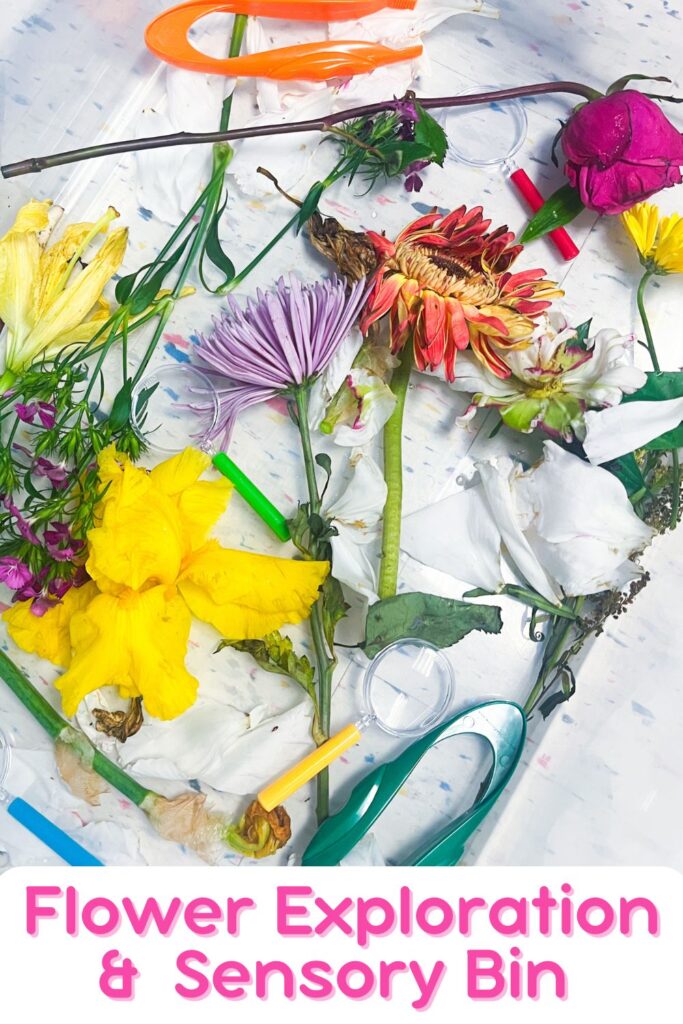
There’s something magical about bringing nature indoors, and when you give preschoolers the chance to touch, smell, and closely observe real flowers — the learning blooms right along with them! This flower sensory and exploration bin allows young children to become little scientists as they investigate, create, and explore. While they are exploring they will make observations and pose questions that help them learn by making their own discoveries.
What You’ll Need:
- A variety of real flowers (different colors, sizes, and types)
- A shallow bin or tray
- Magnifying glasses
- Small scissors (supervised)
- Tweezers or tongs
- Bowls or cups for sorting
- Optional: paper, crayons, and clipboards for drawing observations
Setting Up the Flower Discovery Bin:
- Collect a mix of fresh flowers. Pick up a small bouquet from the store, gather blooms from your garden, or take a nature walk with your preschoolers to collect wildflowers.
- Arrange the flowers in a bin or on a tray, leaving plenty of space for little hands to work.
- Place magnifying glasses, tweezers, and scissors nearby for investigation.
- Set out small containers for sorting petals, stems, leaves, and other plant parts.
- Optional: Add a simple flower parts chart or observation sheet to extend the learning.
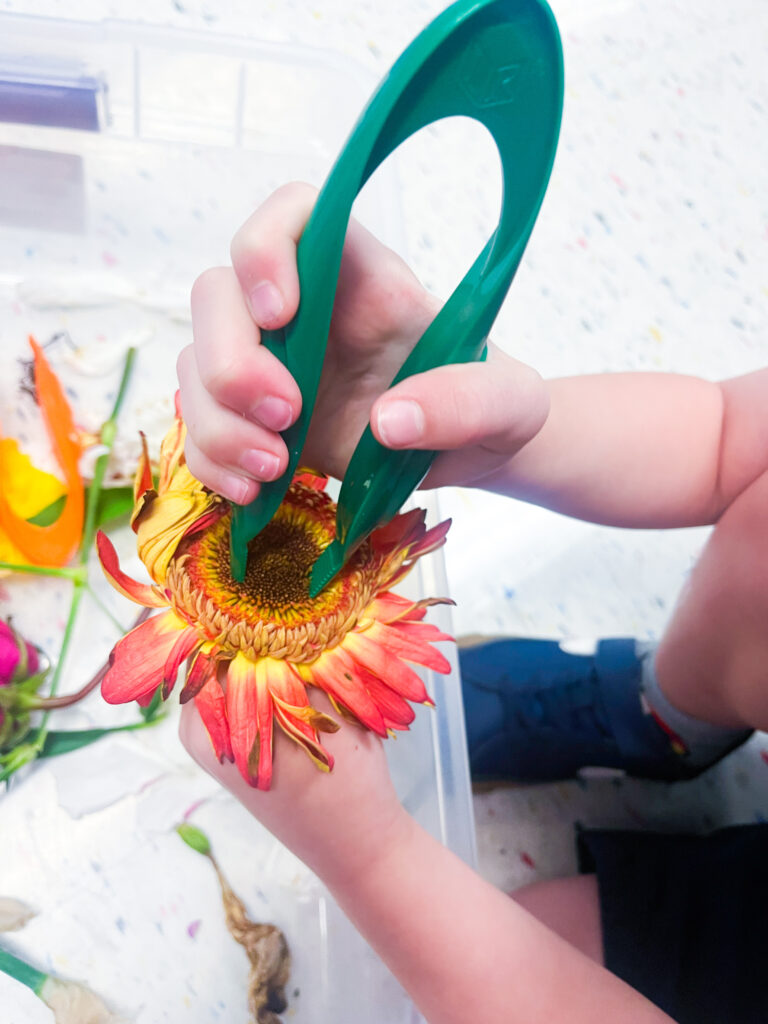
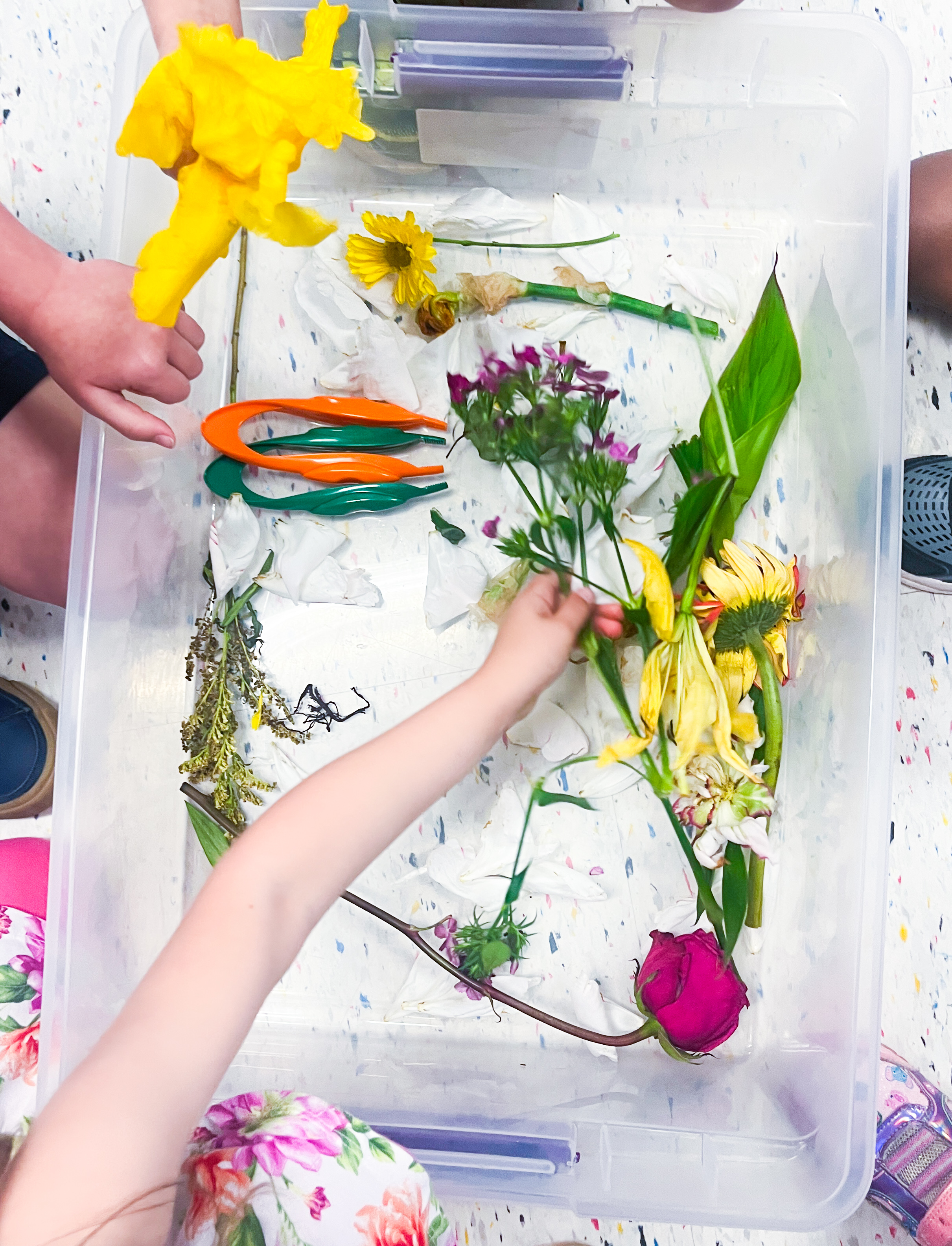
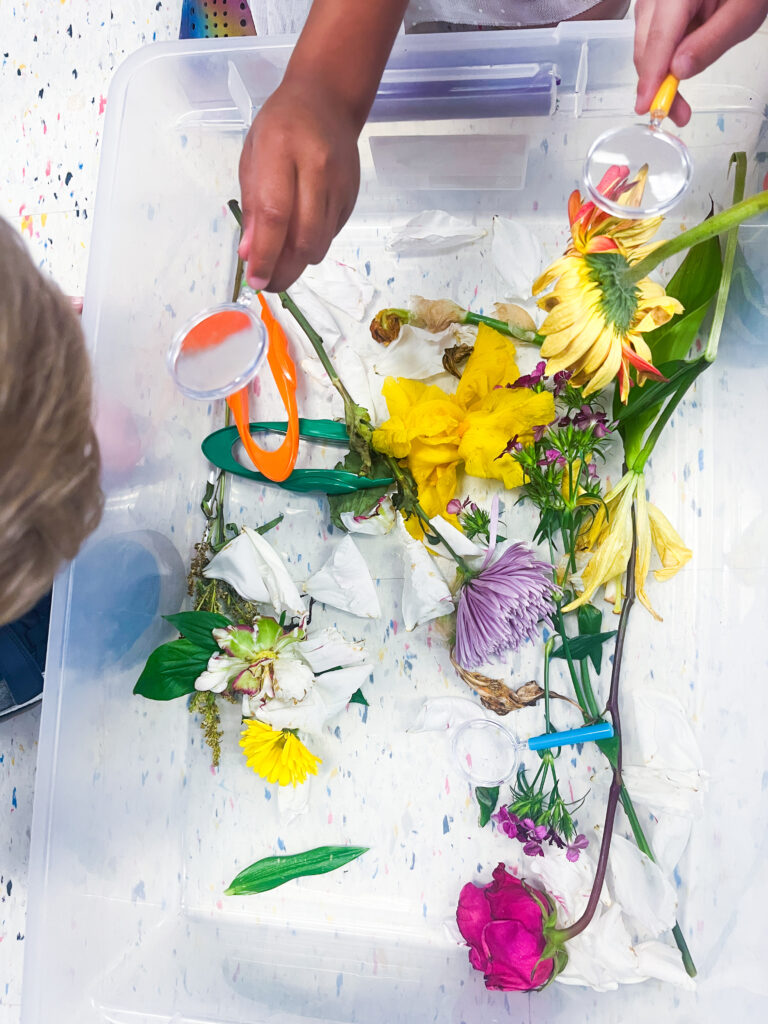
Explore and Investigate:
✨ Look closely. Encourage children to use magnifying glasses to observe details — tiny veins in leaves, fuzzy stems, or pollen on petals.
✨ Touch and smell. Talk about the textures (soft, smooth, prickly) and scents (sweet, strong, grassy).
✨ Take apart and discover. Carefully snip or pull apart flowers to see what’s inside. Can they find the petals, stem, leaves, and pollen? What colors and shapes do they notice?
✨ Sort and classify. Sort by color, type of flower, number of petals, or size.
✨ Draw what you see. Invite children to record their discoveries with simple drawings or nature journals.
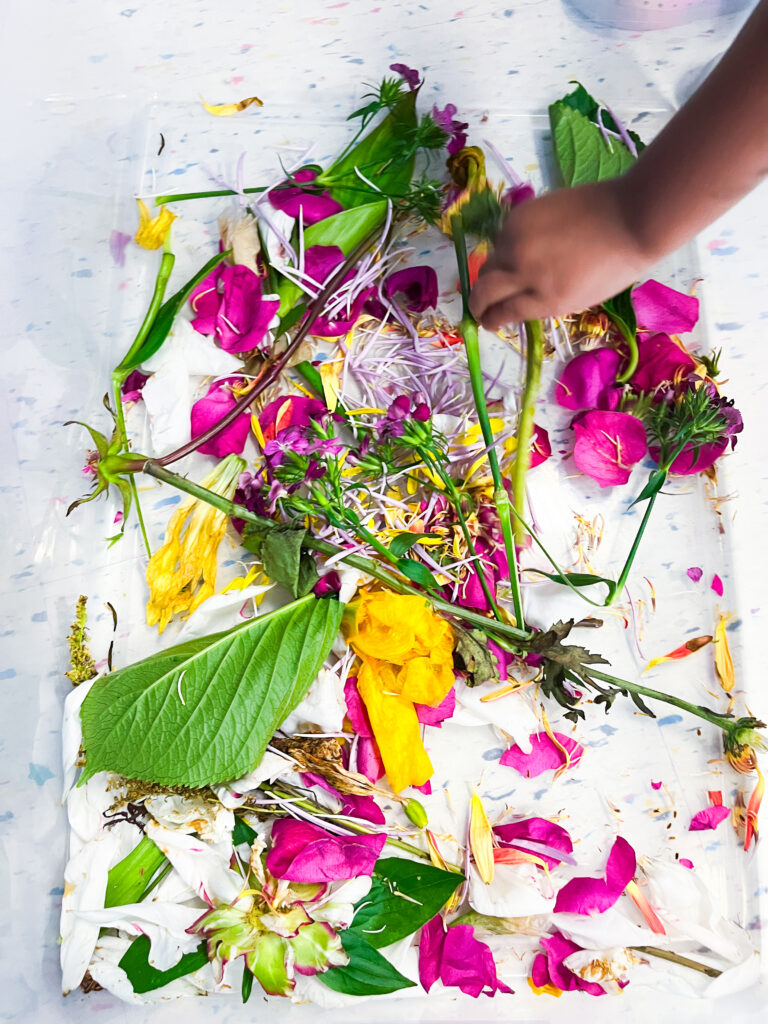
What Children Learn:
🌿 Scientific Inquiry — Asking questions, making observations, and experimenting. I love hearing about the observations that my students have and the questions that come from their exploration.
🌿 Fine Motor Development — Snipping stems, pulling petals, and using tweezers to sort and pull the seeds out.
🌿 Vocabulary Growth — Learning words like petal, pollen, stem, and leaf.
🌿 Sensory Awareness — Noticing scents, textures, and colors in the natural world.
🌿 Creative Expression — Arranging flowers, creating patterns, or making art from petals.
Extend the Fun:
📚 Read Planting a Rainbow by Lois Ehlert or Flowers Are Calling by Rita Gray to connect books and hands-on learning.
🌼 Try pressing favorite petals and leaves to make a nature collage later.
🌼 Go on a flower hunt around your neighborhood or school and add new finds to the bin.










Leave a Reply